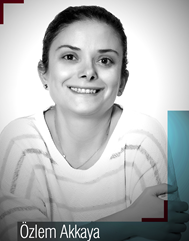
Our Aim: National and International Competent Communicators
Public Relations and Publicity Department started its academic activities with Professor Dr. Ayseli Usluata's founding chairmanship in 1996. Today it is one of the most preferred departments in Turkey in the field of communications.
Our department provides education to more than 400 students with its staff consisting of academicians who have proven themselves at national and international levels and leading names in the sector, PRP continues its success with increasing domestic and international activities and awards every year. As a department that attaches importance to social and cultural ties, our goal is to support the residents of the nursing homes and primary school students in around Kayışdağı with our award-winning “7 to 77” social responsibility project. At the same time, we bring together the leading experts in the sector with students through courses and/or seminars.
We develop different programs and agreements to improve our students' international understanding and enhance their experience. Erasmus and Exchange agreements are increasing every year; We welcome students and lecturers from various countries. Also, with these exchange programs, our students may study abroad.
We are proud of our graduates who work in boatsful positions in the communication sector and raise our goals to the highest level. We would like you to join our candidates who will work in the communication sector, national and global companies, political institutions, bureaucracy, and non-governmental organizations.
Program Goals
- Students should have the necessary theoretical equipment to be successful in academic studies,
- Students should have the skills to choose and use contemporary tools necessary for field applications.
- To equip students with the critical view, analytical approach, problem solving, multi-faceted thinking, interpretation and inference skills required for effective public relations practices,
-
Students should be trained as public relations and publicity specialists who can communicate effectively, especially in written and verbal presentations, can work in teams and interdisciplinary, have a sense of responsibility, are creative, self-confident and adhere to ethical principles,
- To raise students as individuals who are committed to democracy, respect human rights and are aware of their social responsibilities.
Program Learning Outcomes
- S/he has theoretical knowledge about the field of public relations
- S/he knows the research methods and techniques that are related to the field of public relations.
- S/he has knowledge and awareness about the interdisciplinary issues that are required by the field. S/he comprehends the relation of those issues with public relations.
- S/he is able to make oral presentations in English about her/his field.
- S/he has the digital competencies that are required by the field.
- S/he has the ability of creative thinking that is required by the field of public relations.
- S/he has the abilities of research, planning, implementation, measurement and assessment that are necessary for a successful public relations practice.
- S/he evaluates and applies the knowledge and abilities she/he has acquired in her/his field to partner organizations in the sector through teamwork.
- S/he is able to evaluate the knowledge and abilities she/he has acquired in her/his field from an analytical and critical perspective.
-
S/he has the awareness of practicing and developing the profession of public relations by adhering to ethical rules.
Below is the link to the Public Relations and Publicity Department's Curriculum.

